- The high school classroom is standard issue. I’ve grown up in this mill town, but it’s really dying now. None of the students around me in this creative writing class have aspirations to become a writer. They want to go to college and get a job that they won’t get laid off from. My teacher Mr. Moore tells me: it doesn’t matter where you go to school. Anywhere you go, you’ll find great professors to work with. He says, yes, I think you have what it takes to become a writer.
- I’m in a standard issue professor’s office for my mid-semester conference in fiction 101. It’s probably the first workshop I’ve ever taken in my life. The professor looks up at me, squints, and says: The problem with you is that at some point in your life someone told you you were creative.
- I’m 23 years old and about to get into my boyfriend’s puke green Chevy. It’s parked in my parents’ driveway. We’ve stopped to visit them as we head west after I’ve graduated from the University of New Hampshire. We’ll travel across the country for months without any real destination, although we end up in San Francisco for 4 years. My parents don’t understand what in the hell I’m doing, although they wouldn’t say it that way. My dad tells me: always make sure you’re making enough money per month so that one week goes to rent, one goes to utilities and bills, one goes to savings, and one is for spending money. I follow this advice for years and in many ways it’s how I am able to write and work and live and be happy in many different places.
- My friend Pam on many different occasions: If you’re not having fun, leave.
- I’ve just met my roommate Mallory Tarses at Sewanee Writers’ Conference and by dinner time everyone thinks we’ve been friends forever. I write flash fiction, have been writing it for many years. Everyone tells me I need to write a novel. Everyone. Mallory says, or why not just get really, really good at writing flash fiction?
- At that same conference Tim O’Brien says: Don’t forget to look around while you’re in there writing the story, take the time to look around.
- My friend Jonah Winter: Knock it off.
- I’m four years out of graduate school and living in Pittsburgh with a real job working in museum education. It’s 40+ hours a week and stressful. I feel lost so I email my mentor Marly Swick (See #1) and tell her I’m ungrounded and out of touch with any kind of national writing community. She says, “Why don’t you apply to some writing residencies? I think it’s time for you to do that.”
- I’m at Atlantic Center for the Arts studying with Jim Crace and a great group of fiction writers. Armadillos rustle through the grasses below the boardwalks. Jim Crace says: “Slow down. Look at each sentence. Craft each sentence. Vary the length. Think about word choice. Avoid repeated words. Use active verbs. You already do this instinctually, now I want you to do it deliberately.”
- Pam Painter: Start with a list. A list is never intimidating.
- I’m running the Gist Street Reading Series in Pittsburgh. The writer John Dalton gets up to read from his debut novel Heaven Lake. He finishes and immediately sells out of books. Later he tells me: Summarize the novel in your introduction and then read a strong section that doesn’t logically follow from the summary. People buy books because they want to find out how the two connect.
- There’s a big round table and 21 of us sit around it. The Creative Capital retreat is like a boot camp in professionalism for artists. They tell us: Always introduce yourself using your first and last name. They tell us: Have a 1-year plan and a 5-year plan. They tell us: If you’re not being rejected, you’re not working hard enough.
Creative Writing
#ArtLitPhx: Four Chambers Press- GET LIT: Man Overboard
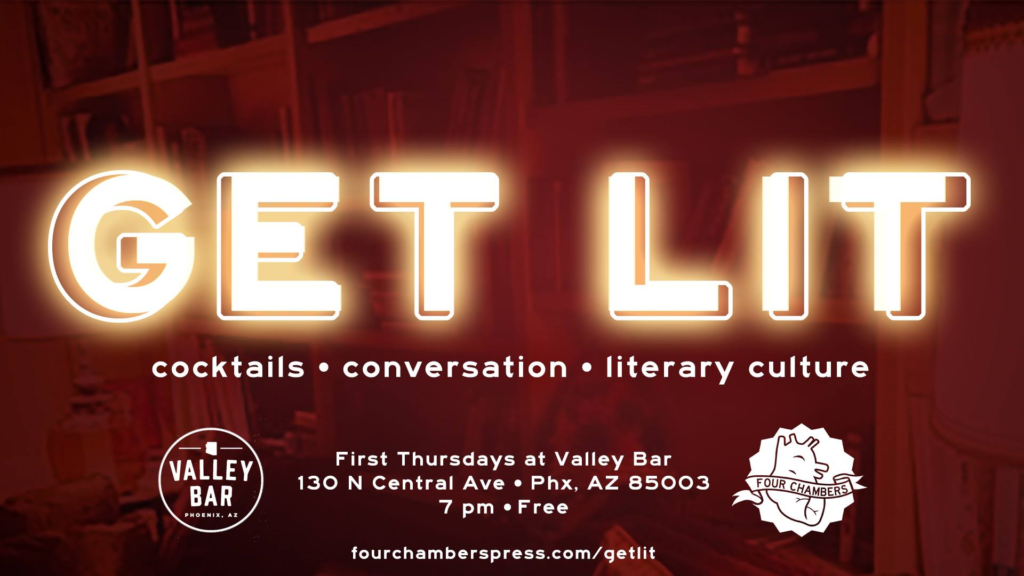
GET LIT: MAN Overboard
Date: August 2nd 7pm-8pm
Location: Valley Bar, 130 N Central Ave, Bsmt, Phoenix, Arizona 85004
Event Description:
Inspired by 17th Century French Salons – intimate gatherings where people would come together to exchange literary and philosophical ideas under the roof of an educated host – Four Chambers Press will be hosting a night of literary conversation, community – and of course, drinking – with Phoenix Poet Laureate and ASU Lecturer of English Rosemarie Dombrowski, PhD.
This month’s topic: Masculinity
How are men constructed in literature? What does a male perspective look like? How have representations of masculinity changed?
Meet us in The Reading Room inside The Rose Room at Valley Bar (Basement, 130 North Central Avenue, Phoenix, AZ 85004). Valley Bar is located on Monroe St down the alley between Central and 1st Ave. Parking is available in several public garages around the area and at meters down First Ave. Valley Bar is also a two-minute walk from the light rail via the Central Ave and Van Buren stop. We also recommend a bicycle.
As space is limited, we recommend arriving early to secure your seat.
Please e-mail us at fourchamberspress@gmail.com with any questions or suggestions for future topics. Hope to see you there!
#ArtLitPhx: Its Writing Group! Four Chambers 2nd Sundays at Songbird Coffee & Tea House
 Its: Writing Group!
Its: Writing Group!
Public · Hosted by Four Chambers Press and Songbird Coffee & Tea House
at Songbird Coffee and Teahouse
812 N 3rd St, Phoenix, AZ 85004
Because what’s a writing community without structured opportunities for feedback?
We are open to individuals of all backgrounds and experiences working in any genre, style, or form of creative writing—poems, short stories, flash fiction, experimental work, personal essays, op-eds, articles, blogs, memoir, etc—at any stage of the writing process. If you are bringing work, please bring 5 – 6 hard copies to share with the group. If you are bringing prose, we respectfully ask you to bring under 3000 words. Please note that you do not have to bring work. Parking is available for free in a small parking lot behind the coffeeshop and metered down 3rd St and throughout surrounding neighborhoods. Songbird is also a five-minute walk from the light rail via the Central Ave and Roosevelt stop. We also recommend a bicycle. Feel free to coordinate car-pooling on our Facebook page as well. Writing group is a safe, structured, and supportive space for people to come together, get to know each other, and exchange compassionate, constructive, and thoughtful feedback on each others work–helping each other to grow and progress as creative writers, connecting as human beings, and building community. For more information please e-mail fourchamberspress@gmail.com. Hope to see you there!
Contributor Update: Alberto Rios and Nogales Gallery receive Arts awards
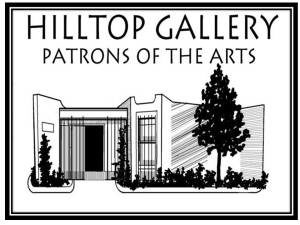 Nogales, AZ has once again returned to the state’s artistic spotlight. On the weekend of Feb 13th, its Hilltop Gallery was announced as a finalist in the 2018 Governor’s Arts Awards. These awards are presented by Arizona Citizens for the Arts in partnership with the office of the Governor. They are based on the significance of the nominee’s achievements and contributions, the range of individuals and groups served by these contributions, and the degree of dedication that the nominee has to the arts. Since 1981, upwards of 200 awards have been presented to various artists and other individuals, cultural groups and organizations, and businesses.
Nogales, AZ has once again returned to the state’s artistic spotlight. On the weekend of Feb 13th, its Hilltop Gallery was announced as a finalist in the 2018 Governor’s Arts Awards. These awards are presented by Arizona Citizens for the Arts in partnership with the office of the Governor. They are based on the significance of the nominee’s achievements and contributions, the range of individuals and groups served by these contributions, and the degree of dedication that the nominee has to the arts. Since 1981, upwards of 200 awards have been presented to various artists and other individuals, cultural groups and organizations, and businesses.
The Hilltop Gallery is one of three finalists in the Arts in Education (Organization or School) category. These and other honorees were announced at a reception on Feb 6th, and on March 22nd in Phoenix, at the 37th annual Governor’s Arts Awards dinner and celebration, the winners will be announced.
The Hilltop Gallery, founded in 1968, is the region’s only permanent art collection. Its exhibits and education galleries focus on the variety of cultures from both the U.S and Mexico. The Gallery often collaborates on events with other local institutions and centers, such as the Consulate of Mexico. It also organizes art classes for the community, in addition to special corporate art shows for local business sponsors from June to August. One of its upcoming exhibits (March 5), is titled Faith Posey & friends- International Day of the Woman (mixed). If you are interested in becoming a Gallery Member, call 520-287-5515 for more information.
At this same March 22nd event, Alberto Alvaro Rios, also from Nogales, will be presented with the 2018 Shelley Award. This award, in honor of former Arizona Commission on the Arts Executive Shelley Cohn, is presented to an individual who, through innovative effort to create or support beneficial public policy, has advanced the arts in Arizona. Past award winners include Terry Goddard, past Phoenix mayor; Shirley Estes, builder of the Ventana Canyon Resort and community leader; and Katie Dusenberry, previous board chair of the Arizona Theater Company.
Rios is Arizona’s first poet laureate, and artistic director of the Virginia G. Piper Center for Creative Writing at Arizona State University. He received his BFA in 1974 and his MFA in creative writing in 1979, both from the University of Arizona. His many volumes of poetry include A Small Story About the Sky (Copper Canyon Press, 2015), The Dangerous Shirt (Copper Canyon Press, 2009), and The Smallest Muscle in the Human Body (Copper Canyon Press, 2002), which was nominated for the National Book Award. Some of his other works include Capirotada: A Nogales Memoir (University of New Mexico Press, 1999), The Curtain of Trees: Stories (University of New Mexico Press, 1999), and The Iguana Killer: Twelve Stories of the Heart (Blue Moon and Conference Press, 1984), which won the Western States Book Award. His work has made appearances in more than ninety major national and international literary anthologies, like the Norton Anthology of Modern Poetry.
Rios also contributed to Issue 6 of Superstition Review where several of his poems and an interview are available to read.
Congratulations, Alberto!
#ArtLitPhx: Desert Nights, Rising Stars Writers Conference
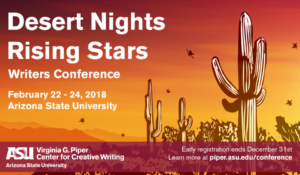
The Desert Nights, Rising Stars Writers Conference is three days of craft talks, panels, workshops and presentations at Arizona State University. With more than 50 sessions from over 25 faculty members in multiple genres and fields, the goal is to provide writers with opportunities to make personal and professional connections, advance their craft, and deepen their engagement with the literary field. View the full conference schedule here.
About the conference from the host, The Virginia G. Piper Center for Creative Writing:
“We are committed to creating an accessible and inclusive space for writers of all backgrounds, genres, and skill levels. Conference faculty and programming encompass many genres which can often go under served in the literary field, including Young Adult, Science-Fiction/Fantasy, Crime Fiction, Translation, Graphic Novels, Hybrid, and more.
Special topics like climate change, social justice, and other contemporary issues also feature prominently.
Publishing, editing, agents, and other aspects of the business of publishing are included as well.
Beyond sessions, attendees can also participate in receptions, discussion groups, after-hour socials, and other opportunities to connect with fellow conference-goers, develop relationships, and build community.”
The 2018 Desert Nights, Rising Stars Writers Conference will take place from Thursday, February 22 through Saturday, February 24. Writers of all backgrounds and experience levels are encouraged to attend. Register here.
Contributor Update: Hannah Lee Jones
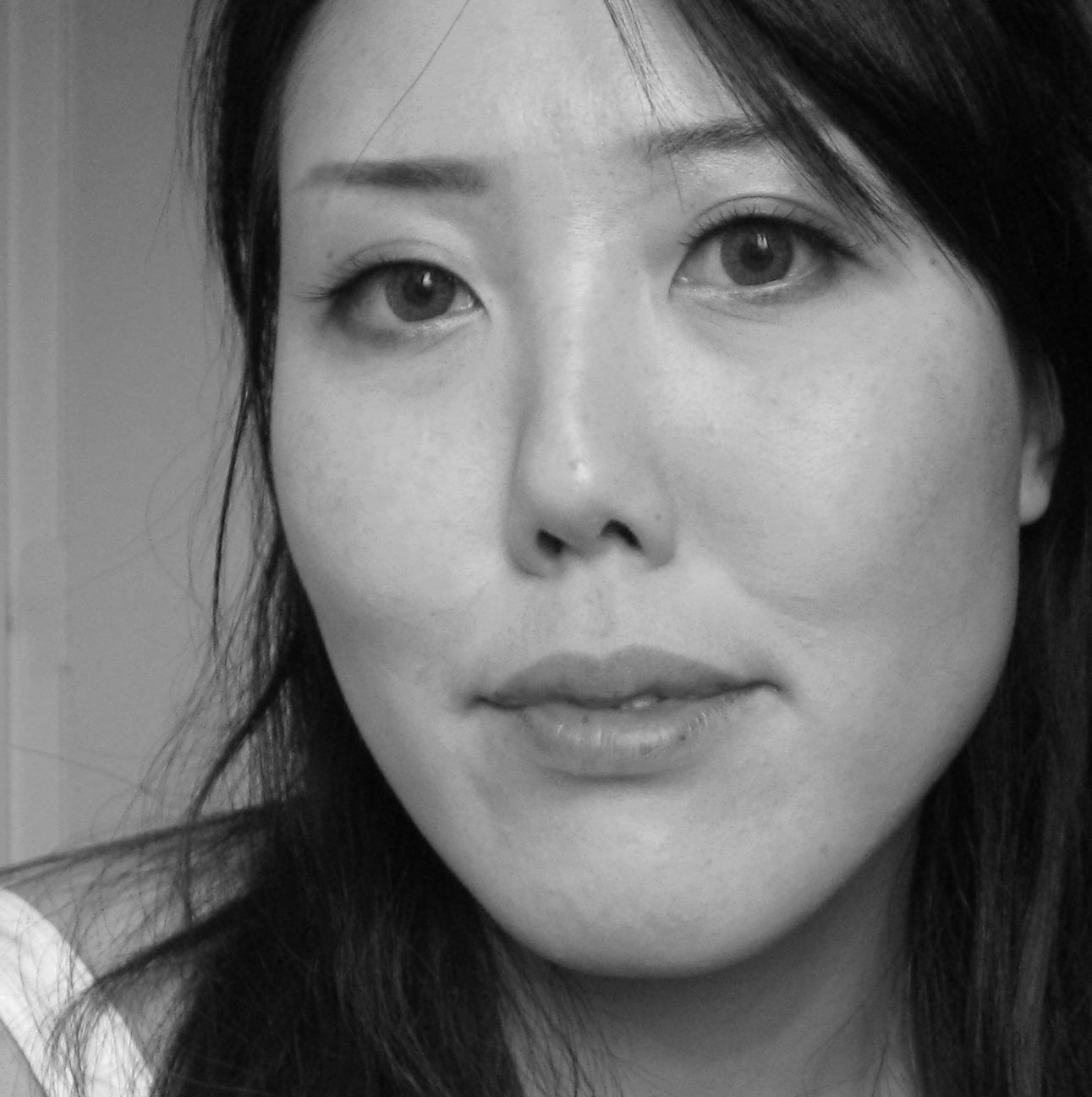 Today we are pleased to announce that past contributor Hannah Lee Jones has been recently featured in Ruminate Magazine. Hannah’s poems “When My Mouth First Opened” and “October” can be read in Ruminate’s Issue No. 44. Purchase a copy by clicking here.
Today we are pleased to announce that past contributor Hannah Lee Jones has been recently featured in Ruminate Magazine. Hannah’s poems “When My Mouth First Opened” and “October” can be read in Ruminate’s Issue No. 44. Purchase a copy by clicking here.
To read three poems by Hannah Lee Jones in Issue 16 of Superstition Review click here.
Editorial Preferences in Poetry: Megan Bromley
I have never pinned down exactly what poetry is. As a sophomore in high school, I bought a used copy of the first volume of Poems for the Millennium: a soaring, 800-page anthology of modern poetry edited by Jerome Rothenberg. While I read this anthology, I thought poetry was an experiment. It was hard not to feel the fundamental joy of watching an idea, snow-shaped, roll down its hill to build and destroy at once.
The modernist imperative—“MAKE IT NEW”—resonated in my very teenage heart. I wanted to read and write poetry that resisted entropic decay, that pushed past the point of no return and did not want to return. “New” meant scattered and blown-out, spacey and Space Age, supernova-ing. I didn’t “make” anything, just placed two ideas on a page and hoped they played nicely. Reader be damned! I was having fun.
Once during my beginning poetry workshop, I met with my section’s TA (Kyle Bassett) to discuss my life goals and to recite Dean Young’s “Anti-Ambition Ode” (my final assignment). A pigeon pooped on my bike while we spoke. When we finished our conversation, I walked back to my bike to find the fresh evidence and a rusty-colored, one-legged bird confidently strutting nearby. “That’s a poem,” Kyle said.
As an astrobiology student, I’m always asked “What is life?” and as a poetry student, I’m always asked “What is poetry?” and over time, these two definitions have converged. Life does not make sense, particularly in its origin. How do we make life out of its building blocks (nucleotides, minerals, amino acids)? What assembly is necessary? How does it persist and evolve? It’s easy now to look at my more “experimental” poems from high school and see the same failures and assumptions made in them as in some astrobiology research. The blocks are there, but the life is not.
I don’t know what poetry is. I only know that it does. It defies its own dimensions, and finds its way into every niche in which we look. We crack open a rock, and there we find poetry. Sink into the mantle, and it is there. Bottom of ocean. Our cities. Our commute. It lives between the bones. It is the interconnectedness of all things—ultimate betweenness.
To quote from Anne Boyer’s Garments against Women:
“Sometimes when you look at smoothly joining at least two different-sized pieces of flat but pliable material so that these pieces might correctly encase an eternally irregular, perspiring and breathing three-dimensional object that cannot cease its motion you think that there is no way ever this could happen, yet sometimes it does.
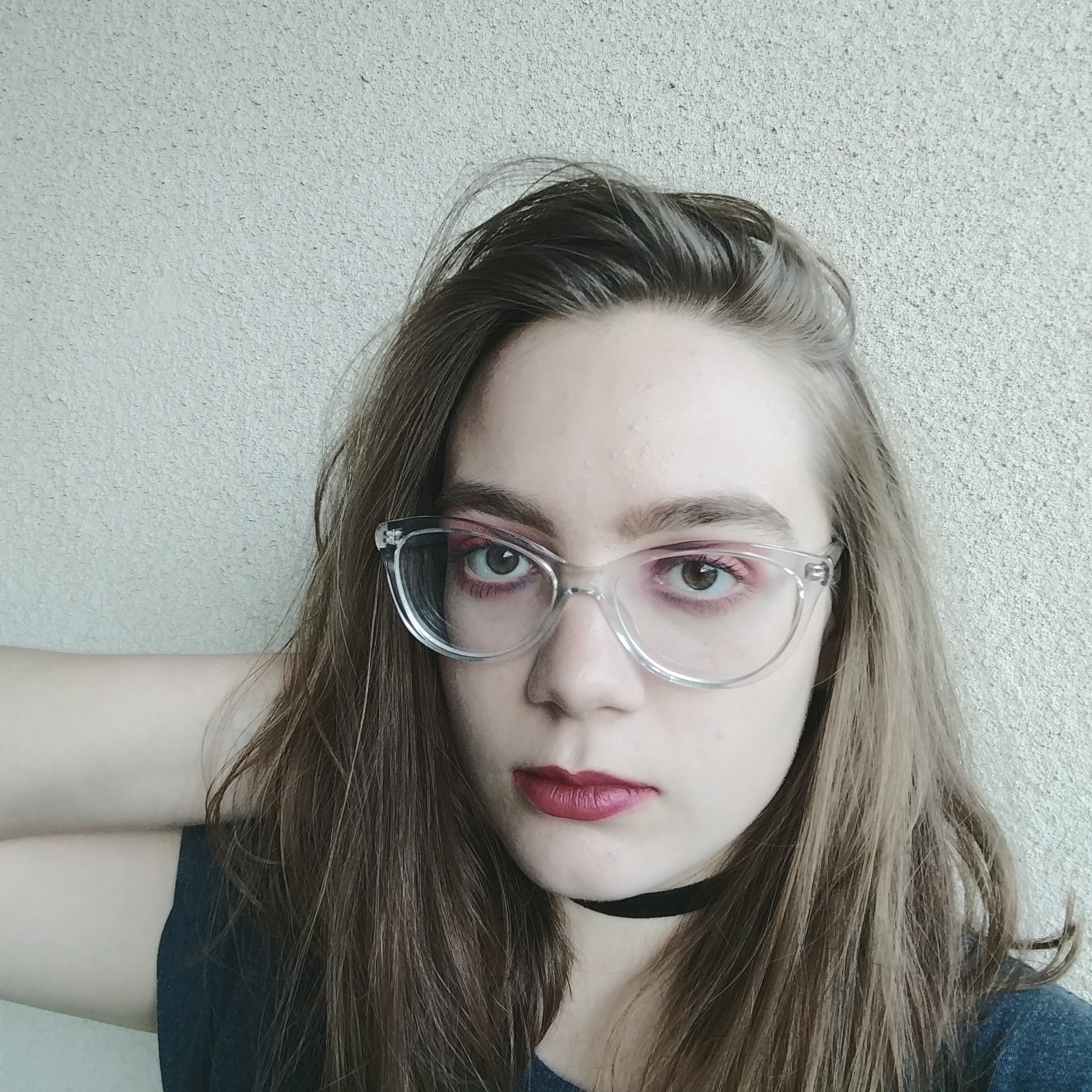 Bio: Megan Bromley is the student Poetry Editor for Superstition Review’s 20th issue. She is a junior studying Creative Writing and Astrobiology, and is also active in the marching band as a piccolo player. She enjoys all things chaotic and/or musical.
Bio: Megan Bromley is the student Poetry Editor for Superstition Review’s 20th issue. She is a junior studying Creative Writing and Astrobiology, and is also active in the marching band as a piccolo player. She enjoys all things chaotic and/or musical.
Contributor Update: Bojan Louis & Irena Praitis
Today we are pleased to announce that past contributor Irena Praitis and future contributor Bojan Louis will be featured in The Stellar Alumni Reading Series on ASU’s Tempe campus.
 Irena Praitis will be reading from her latest book titled The Last Stone in the Circle. The collection of poetry is based on eyewitness accounts and chronicles experiences of prisoners in a WWII German work re-education camp. Purchase a copy of The Last Stone in the Circle from Small Press Distribution here. Bojan Louis will read from his forthcoming book Currents, which encompasses the kinetic dissonance of the contemporary struggle to coexist with self-inflicted eroding environments.
Irena Praitis will be reading from her latest book titled The Last Stone in the Circle. The collection of poetry is based on eyewitness accounts and chronicles experiences of prisoners in a WWII German work re-education camp. Purchase a copy of The Last Stone in the Circle from Small Press Distribution here. Bojan Louis will read from his forthcoming book Currents, which encompasses the kinetic dissonance of the contemporary struggle to coexist with self-inflicted eroding environments.
For more information about the reading click here.
Read two of Irena’s poems in Issue 1 of Superstition Review here.
Contributor Update: Paisley Rekdal
Today we are pleased to announce that past contributor Paisley Rekdal will be the poetry consultant for the 2018 Writers at Work Conference. The Writers at Work Conference takes place in Alta Lodge, Alta Utah, near the Wasatch Mountains, where writers of all backgrounds gather to share ideas, craft, and fine writing. For more information click here. 
Paisley also released a book-length essay titled The Broken Country: On Trauma, a Crime, and the Continuing Legacy of Vietnam. The Broken Country uses an incident that took place in Salt Lake City, Utah in 2012 to delve into the long-term cultural and psychological effects of the Vietnam War. Purchase a copy from The King’s English Bookshop here.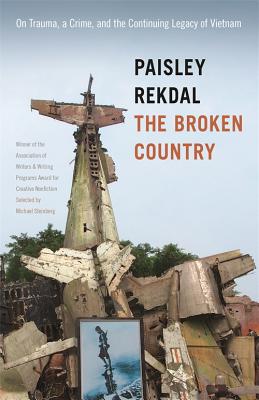
To read our interview with Paisley in Issue 19 of Superstition Review click here.
Guest Post, Liz Robbins: Generation Vex: Returning to Walls
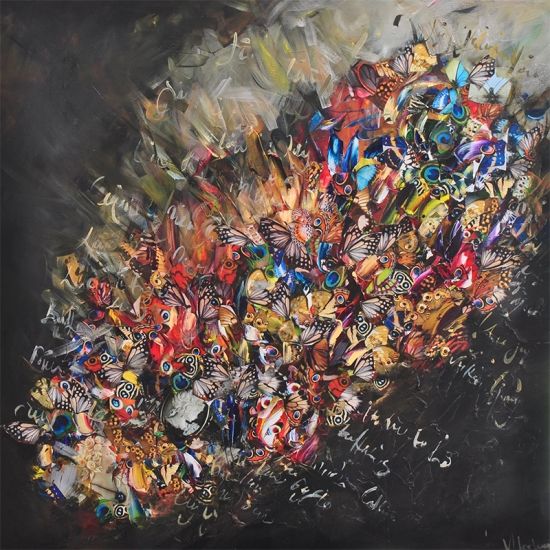 Last week, I had a conversation with a visual artist about the challenges of making art as we age. I’ll turn forty-six in December, and my friend is near there. I’ve read the statistics: the average poet peaks in her twenties; artists tend to be more in line with novelists, creating their best work in their forties (lucky guy). Still, with modern life and its distractions (see Anthony Varallo’s good post on interruption), finding inspiration tends to become more problematic with age.
Last week, I had a conversation with a visual artist about the challenges of making art as we age. I’ll turn forty-six in December, and my friend is near there. I’ve read the statistics: the average poet peaks in her twenties; artists tend to be more in line with novelists, creating their best work in their forties (lucky guy). Still, with modern life and its distractions (see Anthony Varallo’s good post on interruption), finding inspiration tends to become more problematic with age.
The artist and I briefly discussed strategies we’ve tried to keep the wheels turning. He’s a pro: a gifted painter who reinvented his artistic identity by trying—and mastering—a new genre (video). He’s secured artist residencies. He’s earned a sabbatical. Yet he juggles a full-time teaching gig with a brilliant, lively family, which is to say, he drinks a lot of coffee. He’s constantly weighing appropriate balance and space—responsibilities galore, but good ones, ones crackling with depth and possibility. I struggle to find space—and inspiration within that space—for art in similar ways. In recent years, it’s been in the playgrounds of other art mediums, which sometimes means excellent live music shows, but often means wherever fresh contemporary visual art can be found locally; when on the Flagler College campus, where I teach, I frequent CEAM (the Crisp Ellert Art Museum). This is nothing new: poets have written ekphrastic poems since the beginning, many of them great and lasting (ie. Auden’s “Musee Des Beaux Arts”). And this is perhaps because there’s a certain kind of attention required of visual art—how color works to convey mood, for instance, or how vital a fresh concept to the work’s success—that helps remind us of important elements in poem-making. Not every poet has the same hurdles when it comes to making poems, but one of mine tends to be getting hyper-focused on the linear argument—that which I find most interesting, chasing the a-ha! moment—and therefore getting lazy about filling in with lush details. Or filling in the details, but not presenting them in strange or original ways. Another challenge is finding new themes: my obsessions have gone through the wash twenty times; all that hot water has faded and shrunk them. Spending a few hours with a visual artist’s work tends to get fresh angles spinning. For instance, one of my more recent riffs came courtesy of Anna Von Mertens, a highly-accomplished multi-media artist, currently living in New Hampshire. In this series, she’s taking well-known portraits (often self-portraits by artists like Van Gogh and Frida Kahlo) and from them, creating auras, using cloth, stitching, and homemade dye. Gorgeous. Mind-blowing. When I saw some of these in a CEAM exhibit, I immediately wanted to talk back to them, create a kind of tribute to them in poems. The result was a series of “aura” poems, using largely the Confessional poets. Here’s one:
aura: james wright
the head and torso shape that of a supplicant,
a nonbeliever in prayer, the eyes closed below
their frames, hands clasped at the heart, but the heart’s
red is the opposite of the dominant pigment, green: sap green
that breaks into flowering, o, Monet’s fields and water lilies
seeding and bursting beneath surfaces, all grown-blessed
in permanent green light . . . . Jenny the muse in hooker’s green:
river-rising just enough to be seen, he will wade in over
his head into the snake’s viridian venom, in the background
Van Gogh’s mother portrait, where the world’s players
smash against each other, competing terribly–
who wouldn’t waste a life for the naive green just breaking
into gallop? the wild fields blossoming?
As you can see, I’ve selected a dominant color palette that represents the poet/his work (green, with nods to significant painters who worked famously in green) and made allusions to Wright’s most well-known poems. What I’m most interested in is the conversation, the stimulation that arose from it. A familiar paradox, but one that bears repeating: artists must carve out vacuums in order to make art, yet art is not inspired by such vacuums, but life itself. In support of the collaboration of visual art and poetic inspiration, I bring my students to CEAM every semester, to view what riches our director has procured and to respond in poems; part of my own making process comes in designing prompts unique to the artist’s work. This experience is for them, for me, the dominant lesson: that the art-making engine runs on nouvelles idées, that we must constantly see potential inspiration everywhere and seek it out. If we’re young, the challenge comes in developing the habit; if we’re older, it’s in sustaining it. The irony, of course, with this particular mode: that the new ideas come from ideas already examined, though differently, by other makers. Another paradox (the soul of poetry).